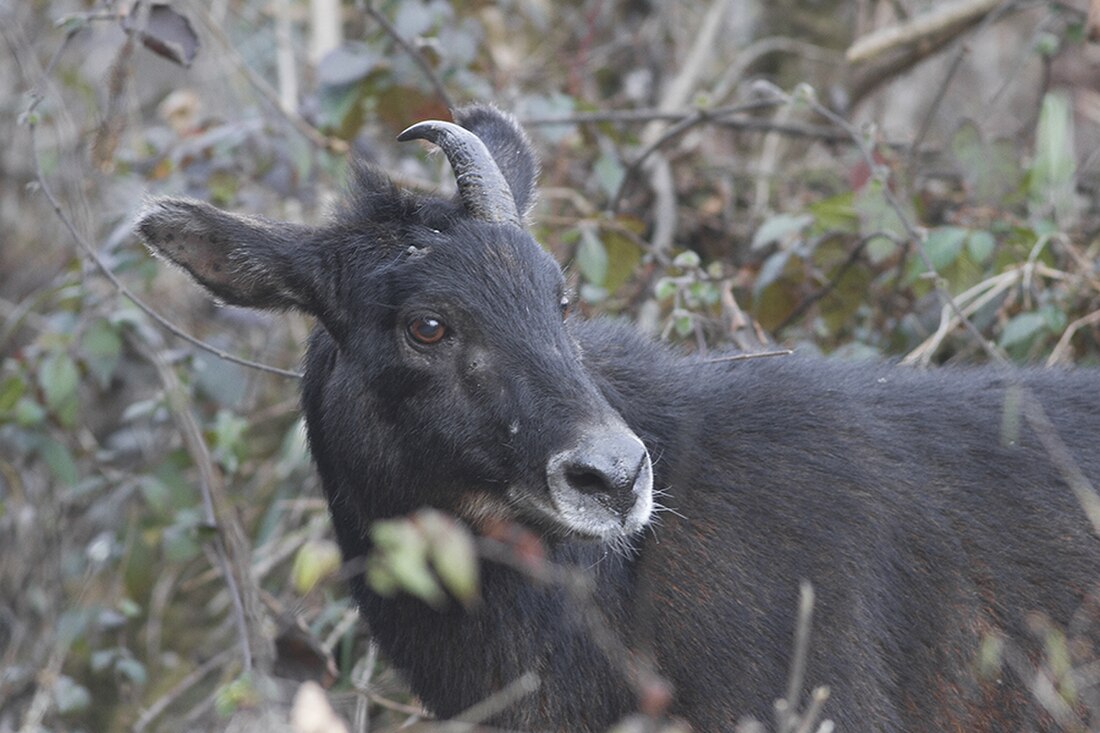Himalayan serow
Subspecies of goat-like mammal From Wikipedia, the free encyclopedia
The Himalayan serow (Capricornis sumatraensis thar), also known as the thar[a] (/θɑːr/ THAR, /tɑːr/ TAR),[2][3] is a subspecies of the mainland serow[4] native to the Himalayas.[1] It was previously considered its own species, as Capricornis thar. It is the official state animal of the Indian state of Mizoram.
| Himalayan serow | |
|---|---|
 | |
| Male Himalayan serow in Pangolakha Wildlife Sanctuary, Sikkim, India | |
| Scientific classification | |
| Domain: | Eukaryota |
| Kingdom: | Animalia |
| Phylum: | Chordata |
| Class: | Mammalia |
| Order: | Artiodactyla |
| Family: | Bovidae |
| Subfamily: | Caprinae |
| Genus: | Capricornis |
| Species: | |
| Subspecies: | C. s. thar |
| Trinomial name | |
| Capricornis sumatraensis thar Hodgson, 1831 | |
Taxonomy
In 1831, Brian Houghton Hodgson first described a goat-like animal with short annulated horns occurring in montane regions between the Sutlej and Teesta Rivers under the name "Bubaline Antelope".[5] As "Bubaline" was preoccupied, he gave it the scientific name Antelope thar a few months later.[6] When William Ogilby described the genus Capricornis in 1838, he determined the Himalayan serow as type species of this genus.[7]
Description
The Himalayan serow is mostly blackish, with flanks, hindquarters, and upper legs that are a rusty red; its lower legs are whitish.[citation needed]
Distribution and habitat
The Himalayan serow inhabits hilly forests above an elevation of 300 m (980 ft), but descends to 100 m (330 ft) in winter.[8] It prefers elevations of 2,500–3,500 m (8,200–11,500 ft) in the Himalayas.[9]
Conservation
Capricornis sumatraensis is listed in CITES Appendix I.[1]
Notes
- This name has also by confusion been applied to the tahr.
References
Wikiwand - on
Seamless Wikipedia browsing. On steroids.
